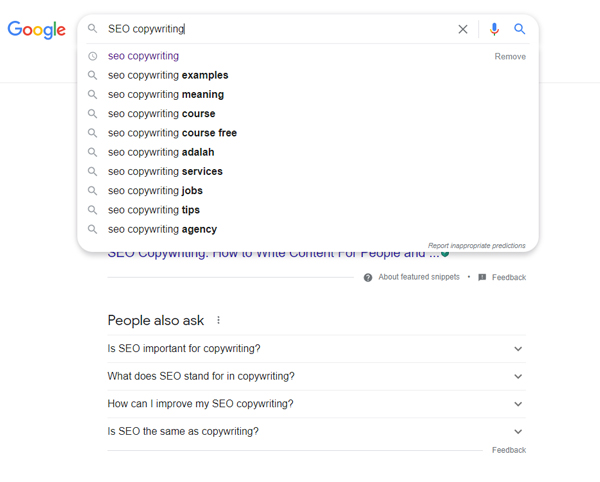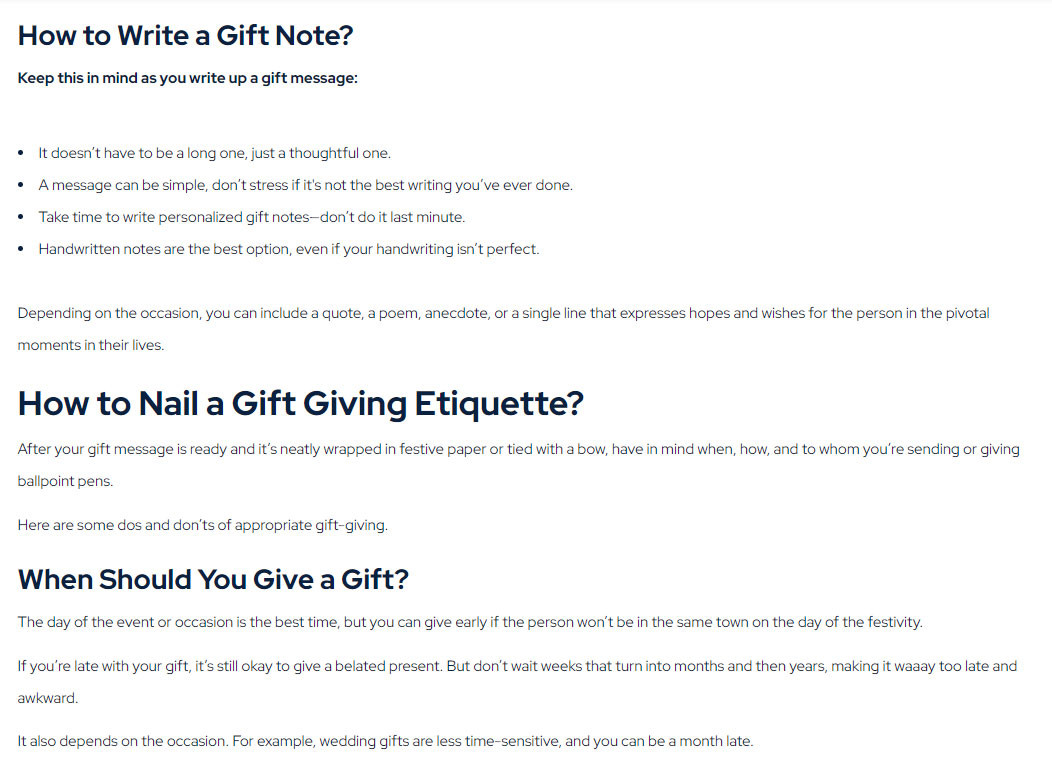Home » Blog » How to Discover What Customers Want to Read on Your Blog

How to Discover What Customers Want to Read on Your Blog
Are you planning your blog content calendar and can’t think of any blog post topics?
Or have you been blogging for a while but haven’t hit the topics that bring in blog traffic? Has this left you wondering whether blogging is even beneficial for your business?
Blogs are an important part of the website for any ecommerce company.
If done strategically, authority blogs lead customers straight to your website, help you establish yourself as an expert in the field and elaborate on all the ways your customers can benefit from your products and services.

According to the marketing strategist, a blog is a powerful tool that helps your customers notice your brand:
“You can buy attention (advertising). You can beg for attention from the media (PR). You can bug people one at a time to get attention (sales). Or you can earn attention by creating something interesting and valuable and then publishing it online for free.”
— David Meerman Scott
You just have to find the right things to talk about.
Whether you’re starting out or have a growing audience and feel as if you’ve already covered and said everything about your business and the way you work—finding fresh blog topics that bring value is a challenge.
Running a Google search, asking your audience what they want to read next and consulting your customer service team are only a few ways to find out what your blog readers truly want to read next.
Use Google to Kickstart Your Blog Traffic
Google helps you discover what people are curious about when it comes to the inner workings of your business. A quick keyword search can reveal:
- Questions your readers have already looked up in the past
- The main pillar post, core ideas, and what you can branch on later
Type in at least two keywords that describe your product and services.
For example, if we were looking for new topics for our blog, we could search for “SEO copywriting”.

Source: google.com
This quick search revealed that people are interested in courses and examples the most, but also that SEO copywriting remains a mystery to many.
We can start with core pillar posts that cover what SEO copywriting is and how to apply SEO in copywriting. From that, we can write separate posts that elaborate on key SEO elements or all the ways businesses can benefit from SEO copywriting.
Check Blog Metrics to Determine What Works
After regularly publishing your blog posts and sharing them on your social networks, use blog metrics (Google Analytics) to find out:
- How many people read your blog posts?
- Who is the demographic visiting your blog?
- How long do your visitors read your blog articles?
These metrics show whether you’ve reached your ideal audience, what kind of posts gain the most traction, and if said audience is connecting with your content.
After you collect enough data, you’ll get a sense of what your audience is most likely to click on next and what kind of blog posts are helpful to them.
If you’re new to blogging, follow this Google Analytics tutorial to catch up on basics:
Ask Your Blog Readers Directly
If you already have a blog, email list and social networks where you share blog posts—ask your audience what they want to learn from your blog posts.
Here are some ways you can ask:
| Asking Method | How to Ask? |
| Anonymous survey (e.g. SurveyMonkey, Google forms) |
|
| Asking on your social networks |
|
| Post on forums (e.g. Reddit, Quora) |
|
They might be curious about your work process, want tutorials on how to use your products, benefits, or want to know what makes you different from the competitors. You’ll never know if you don’t ask.
While you’re waiting for their response, comb through your comment sections on blog posts and your socials to get more ideas.
Consult Your Team for Insight Into Your Customer’s Minds
Chat with your customer service team on what they get asked often. Since they regularly communicate with your customers, they’re familiar with their:
- Frequently asked questions
- Pain points—issues they experience with your products and services
- Common misconceptions about your business
Customers have many questions about what happens behind the scenes between placing their order and getting their package delivered to their doorstep. The basic FAQ section can’t cover all of them in-depth—that’s what blogs are for.
You can’t always accurately predict what your audience of potential and loyal customers needs on your blog because they don’t know it themselves—at least not until after they’ve used or purchased your product.
For example, here is the excerpt from a blog post that covers ideas on presenting a gift they’ve bought from our client:

Source: giftpens.com
Their blog already has in-depth core posts that elaborate on the techniques they use to create gifts and plenty of articles dedicated to their products. The article on presenting a gift further explains how they can get the most of the client’s product.
Customer service can let you in on what most customers struggle with or don’t understand about your service or business model as a whole.
Those are areas you can address in your blog posts.
Ultimately, blogs highlight problems that your products and services solve. Potential customers will google the problem and find the solution through your blog post—which leads them directly to your services.
Regularly Publish Well-Written Content
Whatever you write about, it has to be well-written and provide value to your readers. As Alex says it:
“The first thing you learn when you’re blogging is that people are one click away from leaving you. So you’ve got to get to the point, you can’t waste people’s time, you’ve got to give them some value for their limited attention span.”
— Alex Tabarrok, economist
Readers want to learn from thoroughly researched authority blogs and be able to find the information they need quickly.
They need easy to read and scannable articles.
And they need you to publish consistently because that’ll increase the chance you’ll cover their burning questions and that they won’t forget about you.
Don’t have time to take all of this work upon yourself?
We’re a team of trained copywriters, creatives and content creators.
We can help you suggest the right topics and even publish the articles we’ve written for you once they’re SEO-friendly, polished and quality checked.
This is what our clients have to say about us:
Get in touch with us if you need help with writing high-quality blog posts.
Frequently Asked Questions
How Can You Tell if Someone Is Reading Your Blog?
They respond in the comment section, share, like, and link to your blog. Blog metrics can also tell you who is reading your blog, how long for, and which blog post got the most clicks.
Do People Still Read Blogs?
Yes. Video forms are gaining in popularity, but people still look up blog articles in which they can find the information they need quickly.
How Do I Get People to Read My Blog Posts?
Share it on your social networks and forums that have the right audience for it. Keep a regular publishing schedule so that they know when to expect new blog posts.
CopySmiths
I'm Katrina McKinnon, founder of CopySmiths and Small Revolution. In my 20 years of experience, I have helped online businesses create high-performing content specifically on an eCommerce store's blog. Find me on LinkedIn and Twitter.

CopySmiths offers the best blog writing services for online stores.
If you'd like us to write blog articles for you, click here.
Most Recent
- 3 Bold Questions You Should Ask When Hiring A Content Writer

- 5 Practical Reasons You Should Use a Blog Post Template

- 4 Amazing Benefits of Using a Title Generator for New eCommerce Blogs

- 10 Awesome Bio Examples Your Online Store Blog Should Emulate

- 8 Basic Steps to Successful Content Development Every Time

Podcasts
Got a question?
Ask our friendly team about our article writing services.
Subscribe to CopyZine
Monthly, hand-picked stories of the best in eCommerce Content.





